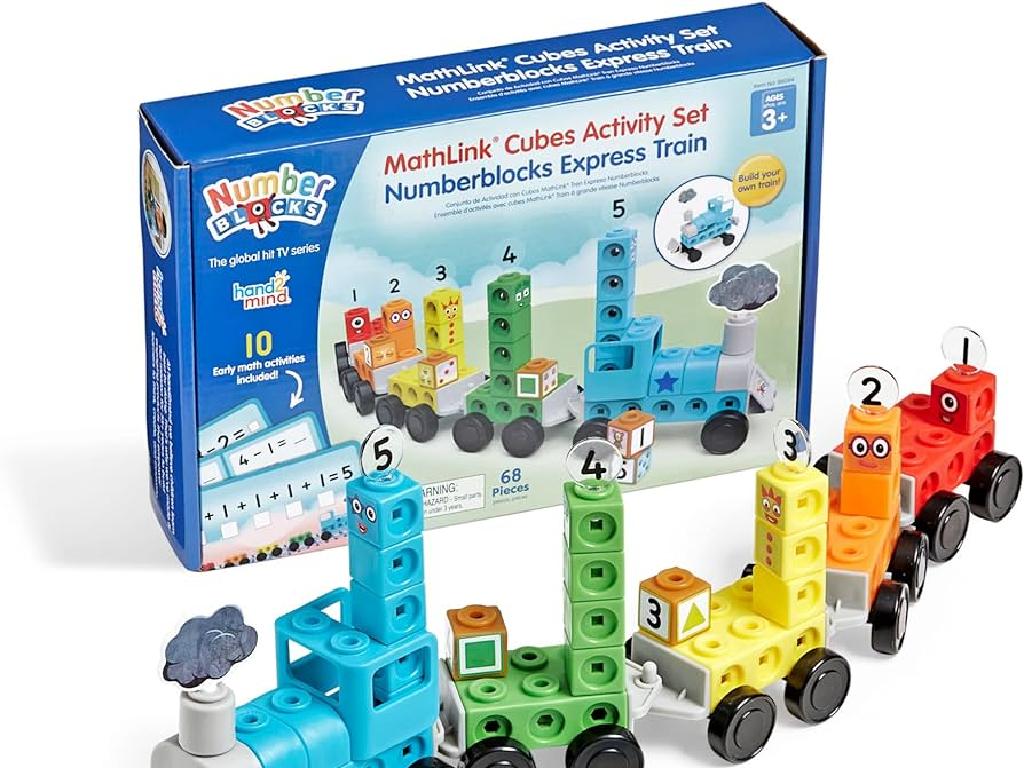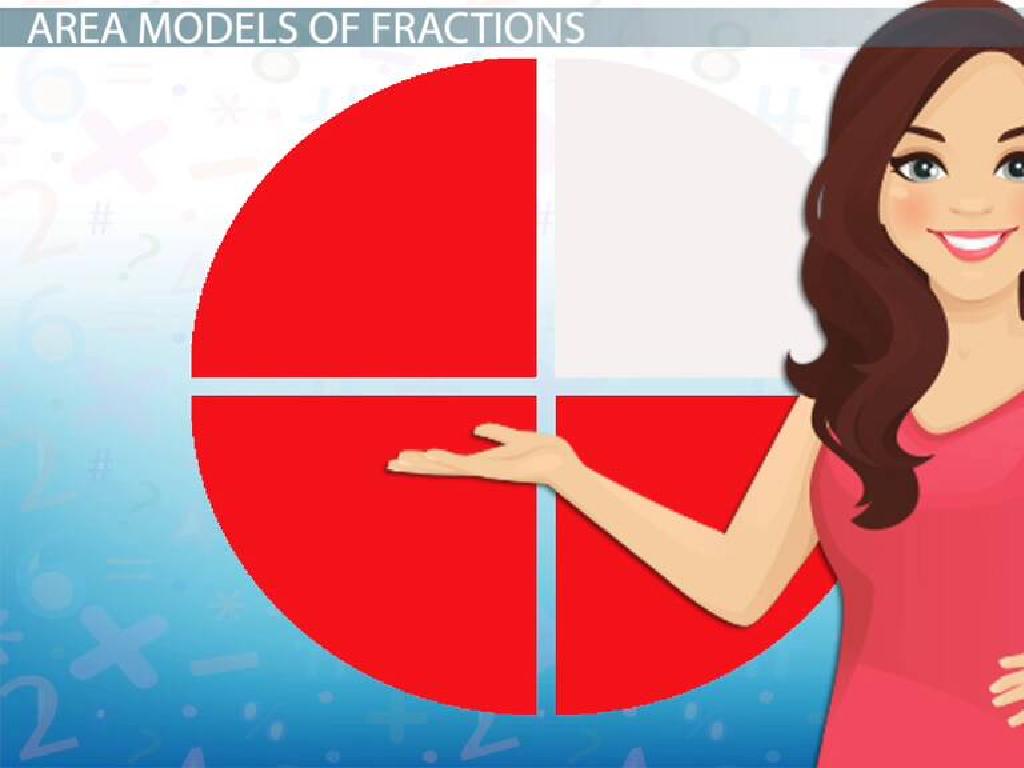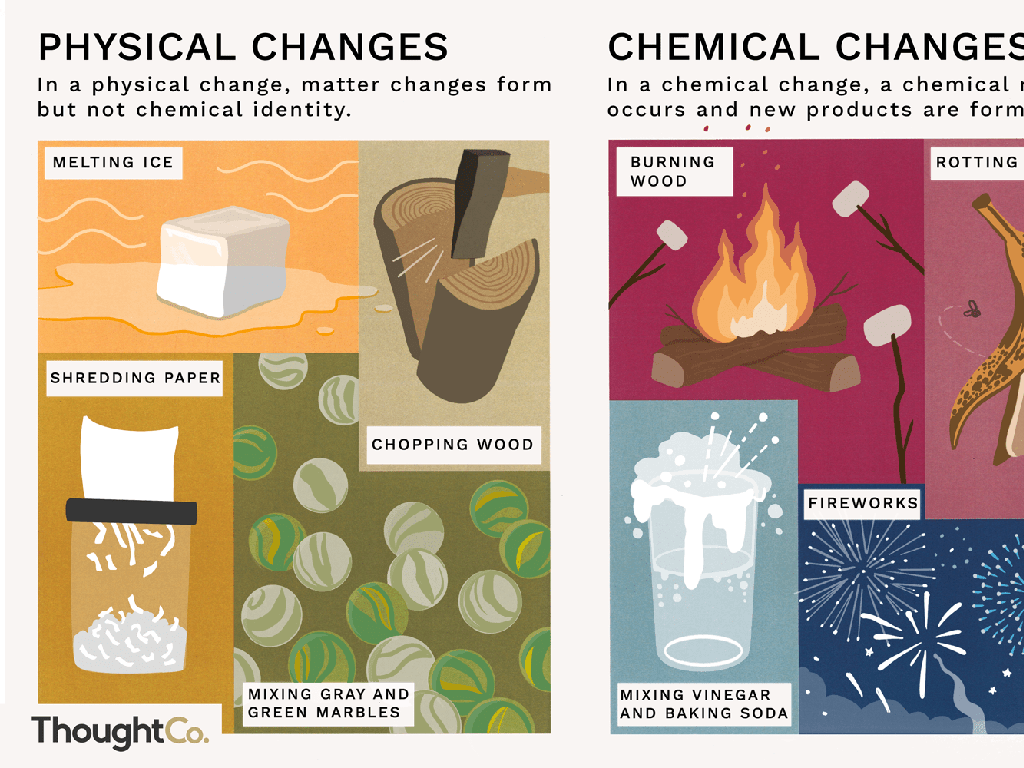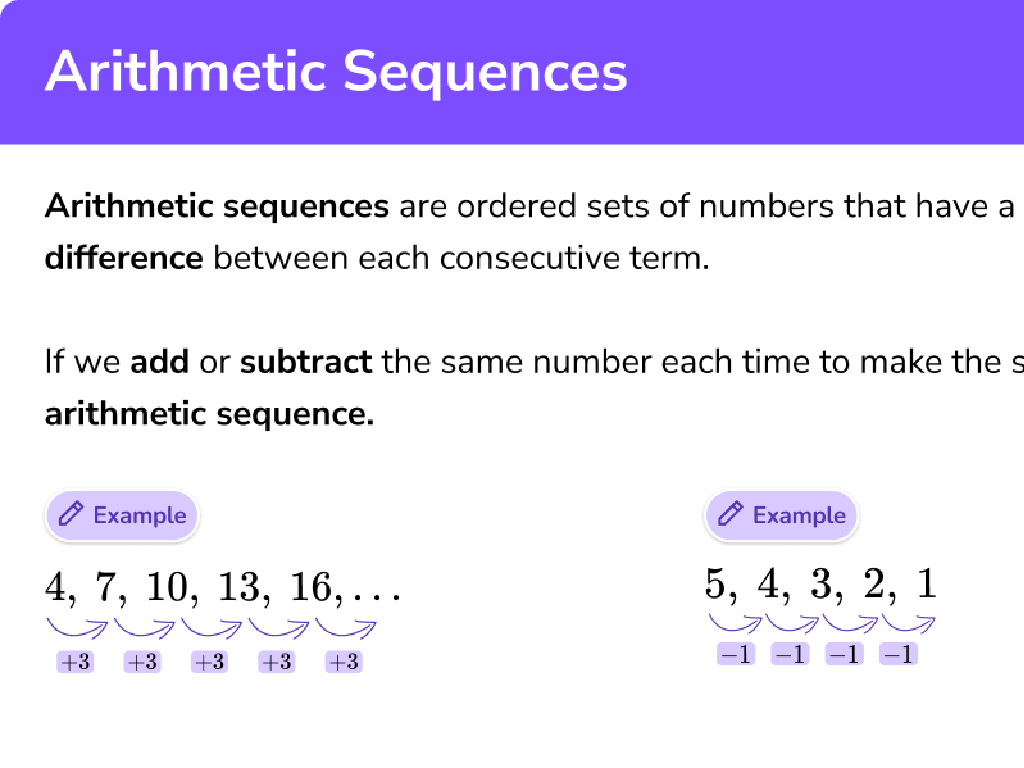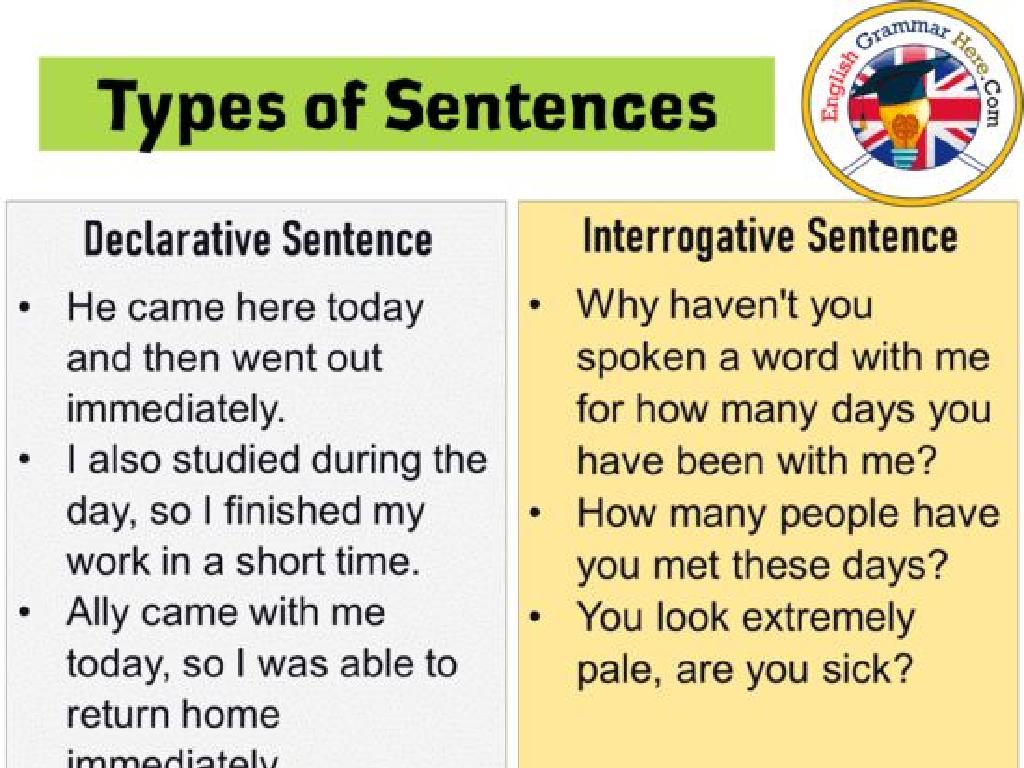Add A Two-Digit And A One-Digit Number - With Regrouping
Subject: Math
Grade: First grade
Topic: Addition: Two Digits
Please LOG IN to download the presentation. Access is available to registered users only.
View More Content
Welcome to Addition: Adding with Regrouping
– Learn to add two-digit and one-digit numbers
– Understand when to regroup numbers
– Regrouping is needed when a column adds up to 10 or more
– Practice adding numbers with regrouping
– Example: 15 + 7. Add 5 + 7 to get 12, write 2, carry 1 over to the tens
– Discover why regrouping is important
– Regrouping helps us work with larger numbers easily
|
This slide introduces first graders to the concept of addition with regrouping. Start by explaining that adding is putting numbers together to find out how many there are in total. Emphasize that sometimes when we add, especially with larger numbers, we end up with a sum that is 10 or more, which doesn’t fit in the one-digit place. This is when we ‘carry over’ or regroup. Use simple examples to illustrate regrouping, such as adding 5 and 7. When the sum is 12, we place the 2 in the ones place and carry the 1 over to the tens place. Provide several examples and practice problems to ensure students grasp the concept. Encourage students to use physical objects like counters or drawings to visualize the process.
Understanding Two-Digit Numbers
– Break down two-digit numbers
– Understand numbers as tens and ones
– Example: Number 23
– 23 is 20 (2 tens) + 3 (3 ones)
– 23 has 2 tens and 3 ones
– Visualize 23 as two groups of ten and three single units
– Helps in adding one-digit numbers
|
This slide is aimed at helping first graders understand the concept of two-digit numbers in preparation for addition with regrouping. Start by explaining that every two-digit number is made up of tens and ones. Use visual aids like blocks or drawings to show that the number 23 consists of two sets of ten and three individual ones. Emphasize that this understanding is crucial when they begin to add a one-digit number to a two-digit number, especially when regrouping is required. Practice with more examples and ensure that students can break down two-digit numbers into tens and ones on their own.
Adding Without Regrouping
– Start with an easy example
– Line up the numbers vertically
– Make sure 3 and 4 are under each other
– Add the ones place first
– 3 (ones) + 4 (ones) = 7 (ones)
– 23 + 4 equals 27
– No carrying over needed here!
|
This slide introduces students to the concept of addition without regrouping. Begin with a simple example to ensure understanding. Emphasize the importance of lining up the numbers by place value, which in this case is the ones place. Demonstrate the addition step by step, showing that when we add 3 and 4, we get 7, and since it’s less than 10, there’s no need to regroup or ‘carry over’. This foundational skill will help them when they move on to more complex problems that require regrouping. Encourage students to practice with similar examples and reassure them that it’s okay if they make mistakes; it’s all part of the learning process.
Understanding Regrouping in Addition
– Adding ones can exceed 9
– If we add 8 + 5, we get 13, which is more than 9.
– Regrouping to the tens place
– We put the 3 in the ones place and carry the 1 to the tens place.
– Example: 15 + 6
– 15 + 6 gives us 5 ones and 1 ten. We write down the 5 and carry over the 1.
– Practice regrouping together
– Let’s try adding 27 + 5 and see what number we get!
|
This slide introduces the concept of regrouping in addition when the sum of the ones place is greater than 9. Start by explaining that sometimes adding two numbers can result in a number that doesn’t fit in the ones place. Show the example of adding 15 + 6, where students will see that adding the ones (5 + 6) equals 11, which is too big for the ones place. Demonstrate how to carry the 1 to the tens place, leaving the 5 in the ones place. Encourage students to practice with different numbers and guide them through the process of regrouping step by step. Make sure to provide hands-on activities and visual aids to help them grasp the concept.
Adding with Regrouping: 25 + 6
– Start with adding the ones
– 5 ones + 6 ones = 11 ones
– Regroup if sum is 10 or more
– We write down 1, carry over 1 to tens
– Add the tens and regrouped number
– 2 tens + 1 ten carried over = 3 tens
– Write the final answer
|
This slide introduces students to the concept of regrouping when adding a two-digit number with a one-digit number. Begin by explaining that we always start adding from the rightmost digits, which are the ones. If the sum of the ones is 10 or more, we need to regroup. Regrouping means we write down the ones digit of the sum and carry over the tens digit to the next column. Then we add the tens column along with any regrouped number. The final step is to write down the complete answer. Use the example of 25 + 6 to illustrate this process, showing that 5 ones plus 6 ones equals 11 ones, which requires us to regroup, and then add the tens to find the final answer of 31. Encourage students to practice with similar problems for mastery.
Let’s Practice Together: Adding with Regrouping
– Start with adding the ones
– If you have 25 + 4, add 5 (ones) + 4 first
– Then add the tens place
– Add 2 (tens) to the result of ones
– Carry over if ones are more than 9
– If ones sum is 10 or more, carry over 1 to the tens
– Practice makes perfect!
|
This slide is an interactive class activity to practice adding a two-digit number with a one-digit number, with a focus on regrouping. Start by reminding students to add the ones place values first. If the sum of the ones place is 10 or more, they need to ‘carry over’ the extra value to the tens place. Then, add the tens place values. For example, in 25 + 4, add 5 + 4 to get 9, then add the 2 tens to the total. If the sum of the ones was 10 or more, remember to add the carried over 1 to the tens place. Activities can include using physical counters, drawing pictures, or using number lines. Encourage students to work through several problems and share their solutions with the class.
Class Activity: Addition Bingo
– Let’s play Addition Bingo!
– Receive your bingo card
– Each card has different addition problems
– Solve the addition problems
– Use regrouping to add two-digit and one-digit numbers
– Shout ‘Bingo!’ for five in a row
|
This interactive activity is designed to help first graders practice addition with regrouping in a fun and engaging way. Distribute unique bingo cards to each student, ensuring that the addition problems require regrouping. Guide the students through solving a few examples as a class before starting the game. Monitor the class as they work on their problems, offering help as needed. When a student gets five correct answers in a row and shouts ‘Bingo!’, pause the game to verify their answers. If correct, celebrate their success before continuing the game. Possible variations of the activity could include group bingo, where students work in pairs, or ‘blackout’ bingo, where the goal is to solve all problems on the card.
Adding with Regrouping: Wrap-Up
– Congratulations on learning regrouping!
– Practice at home to become an addition star
– Try adding 29 + 5 or 46 + 7 for homework
– Next lesson: Subtracting with regrouping
– Keep up the great work!
|
This slide is meant to congratulate the students on their hard work learning how to add two-digit and one-digit numbers with regrouping. Emphasize the importance of practice to reinforce their skills. Provide examples for them to work on at home, such as 29 + 5 or 46 + 7, and encourage them to try creating their own problems. Preview the next lesson on subtracting with regrouping to pique their interest. The teacher should acknowledge the effort put in by the students and motivate them to continue practicing. The notes should also remind the teacher to check in on the students’ progress with homework during the next class.

